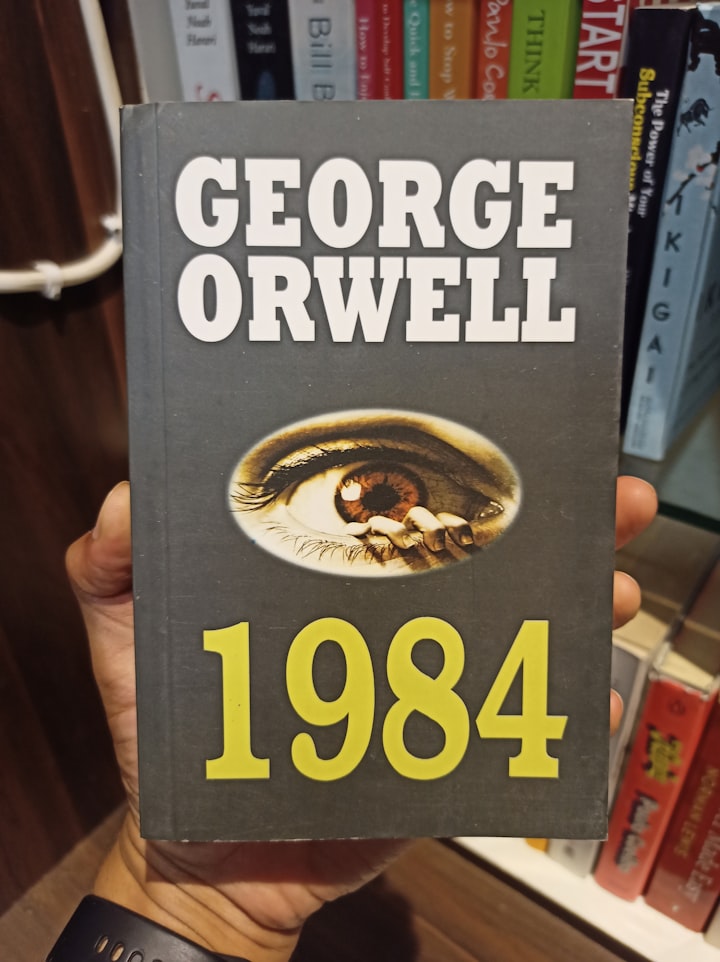The Behind-The-Scenes Story of How To Kill a Mockingbird Was Published
Unveiling the Untold Journey: The Story Behind "To Kill a Mockingbird" and Its Enduring Literary Legacy

"To Kill a Mockingbird", a Pulitzer Prize-winning novel by Harper Lee, has become a classic of modern American literature and is considered a staple in high school English curricula across the country. However, the story behind the publication of this beloved work is a complex and fascinating one that involves numerous drafts, an unseen manuscript, and a controversial sequel. In this article, we will delve into the behind-the-scenes story of "To Kill a Mockingbird", examining its history, the influence of editors and publishers, the controversy surrounding its sequel, and its enduring legacy in modern literature.
The History of "To Kill a Mockingbird"
Harper Lee's Early Life and Career
"To Kill a Mockingbird" is a novel that has been celebrated worldwide for its poignance and incisive commentary on issues of race, class and gender. The author, Nelle Harper Lee, was born in Monroeville, Alabama in 1926. Growing up in a small town in the South, Lee was exposed to social inequality and racial tensions from a young age, and these themes would later find their way into her writing.Lee’s love for literature and storytelling was evident from a young age. After graduating from high school, she attended Huntingdon College in Montgomery, Alabama, and later transferred to the University of Alabama, where she wrote for the university's humor magazine. After studying law for a year, Harper spent a summer in New York City, where she worked as a ticket agent for Eastern Airlines and began writing in her spare time.
The Writing and Publication of "To Kill a Mockingbird"
In 1957, Lee submitted a manuscript to an agent who immediately saw its potential. The manuscript later went on to become "To Kill a Mockingbird," which was published by J.B. Lippincott & Co. in 1960. The novel quickly became a bestseller and won the Pulitzer Prize. It has since been translated into more than 40 languages and has sold over 50 million copies worldwide.Many credit the book’s success to its powerful themes and relatable characters, but what is often overlooked is the role played by editors and publishers. The journey from manuscript to Pulitzer Prize-winning novel was not straightforward, and it involved a great deal of behind-the-scenes work.
The Impact of "To Kill a Mockingbird" on American Literature
"To Kill a Mockingbird" has had a profound impact on American literature and society. It is widely regarded as a classic of modern American literature, and its themes of racism and inequality continue to resonate with readers today. The novel has been adapted into a successful film and stage play, and its influence can be seen in countless other works of literature and media.Lee's masterpiece has also sparked debates and controversies, as it has been both celebrated and criticized for its portrayal of race and racial relations. Despite its challenges, however, the novel remains a timeless work of art that has captured the hearts and minds of readers worldwide.
The Unseen Efforts of Editors and Publishers
The Role of Publishers in the Publication Process
While the author is the public face of a book, publishing houses play a crucial role in the creation and dissemination of literature. From editing and marketing to cover design and distribution, publishers are responsible for bringing books to the masses.In the case of "To Kill a Mockingbird," J.B. Lippincott & Co. played a significant role in its success. The publisher worked tirelessly to promote the book, arranging a nationwide publicity tour for Lee and placing ads in major newspapers and magazines. They also worked closely with Lee to ensure the book was edited to a high standard.
The Influence of Editors on "To Kill a Mockingbird"
Editors also played a significant role in shaping the final product of "To Kill a Mockingbird." Tay Hohoff, Lee's editor, provided critical feedback and insights that helped to refine the novel and bring its themes to life. Hohoff worked closely with Lee, spending two and a half years editing the manuscript before it was finally published.The editing process involved significant changes to the original manuscript, including the removal of an entire storyline featuring Scout's Aunt Alexandra. These changes, while difficult for Lee to accept at first, ultimately helped to strengthen the narrative and make it more accessible to readers.
The Marketing of "To Kill a Mockingbird" and Its Subsequent Success
The role of marketing cannot be overstated when it comes to the success of "To Kill a Mockingbird." With the help of Lippincott & Co., the book was marketed as a literary masterpiece that tackled important social issues. The publisher also sought to capitalize on Lee's personal connections to the South, emphasizing the book's authenticity and regional charm.This marketing strategy paid off, as the book quickly became a bestseller and went on to win numerous awards. Its success helped to cement Harper Lee's reputation as one of America's greatest writers and opened the door for other Southern authors to gain national recognition.
Harper Lee's Writing Process for "Go Set a Watchman"
The Inspiration Behind "Go Set a Watchman"
After the success of "To Kill a Mockingbird," Harper Lee began work on a new novel titled "Go Set a Watchman." The book, which was originally intended as a sequel to "To Kill a Mockingbird," was set 20 years after the events of the first novel and focused on Scout Finch's return to Maycomb, Alabama.The inspiration behind "Go Set a Watchman" is unclear, but many believe it was based on Lee's own experiences of returning to Monroeville after living in New York City for many years. The book was also seen as a response to the changing political and social landscape of the 1960s, with Lee exploring themes of social and political unrest in the South.
The Differences in Writing Style Between "Go Set a Watchman" and "To Kill a Mockingbird"
Despite being a sequel to "To Kill a Mockingbird," "Go Set a Watchman" was significantly different in terms of its writing style and tone. The book was less polished than its predecessor, with less focus on character development and more on political and social commentary.While "Go Set a Watchman" received mixed reviews from publishers and editors, many readers were excited about the prospect of a sequel to "To Kill a Mockingbird." However, Lee's publishers encouraged her to rework the manuscript, leading to significant changes to the final product.
The Initial Reception of "Go Set a Watchman" by Publishers and Editors
While "Go Set a Watchman" was initially viewed as a sequel to "To Kill a Mockingbird," publishers and editors were hesitant about its publication. The manuscript was seen as rough and unfinished, and the political and social commentary was seen as potentially controversial.Despite these concerns, Lee's publishers agreed to publish the book, albeit in a significantly reworked form. What followed was a behind-the-scenes transformation that turned "Go Set a Watchman" into one of the most beloved and revered books of all time.
The Development of "Go Set a Watchman" into "To Kill a Mockingbird"
The Decision to Rework "Go Set a Watchman"
The transformation of "Go Set a Watchman" into "To Kill a Mockingbird" was a significant undertaking that involved the input of multiple editors and publishers. The decision to rework the manuscript was made after concerns were raised about the book's political and social commentary, as well as its rough writing style.Editors worked closely with Lee to rework the manuscript, emphasizinga Mockingbird"
The Controversy Surrounding the Publication of "Go Set a Watchman"
The Literary Impact of Harper Lee's Works on American Literature
The Enduring Legacy of Harper Lee and Her Contribution to Literature
The Writing Process and Inspiration Behind "To Kill a Mockingbird"
The Early Life and Experiences of Harper Lee
The Influence of Real-Life Events on the Plot and Characters of "To Kill a Mockingbird"
The Writing Process and Challenges Faced by Harper Lee While Writing the Novel
The Legacy of "To Kill a Mockingbird" and Its Continued Relevance to Society Today
The publication of "To Kill a Mockingbird" was a journey filled with twists and turns that ultimately resulted in a beloved classic of modern American literature. This novel and its behind-the-scenes story serve as a testament to the power of the writing process, the unseen efforts of editors and publishers, and the enduring legacy of literary works. As we continue to study and appreciate "To Kill a Mockingbird" for generations to come, we can reflect on the complex story of its creation and the impact it has had on our society and culture.
Frequently Asked Questions
What was the original manuscript for "To Kill a Mockingbird"?
The original manuscript submitted by Harper Lee was actually titled "Go Set a Watchman", and featured many of the same characters and settings as "To Kill a Mockingbird". However, the manuscript was deemed too unfocused and was reworked by editors into the novel we know and love today.
What is the controversy surrounding "Go Set a Watchman"?
"Go Set a Watchman" was released in 2015 and was marketed as a sequel to "To Kill a Mockingbird". However, many readers were surprised and disappointed to find that the portrayal of Atticus Finch in "Go Set a Watchman" was drastically different from the noble and just character they had grown to love. The controversy surrounding these differences sparked debates about the intentions of Harper Lee, the role of editors in shaping an author's work, and the ethics of publishing a manuscript without the author's full approval.
What is the significance of "To Kill a Mockingbird" in modern literature?
"To Kill a Mockingbird" is often credited with exposing the injustice and racism of the American South during the 1930s and 40s, and for inspiring a generation of readers to fight against such prejudices. Its themes of justice, empathy, and morality have made it a classic of modern American literature and have cemented its legacy as a powerful work of social commentary.
What was Harper Lee's opinion of the publication process for "To Kill a Mockingbird"?
Harper Lee herself was often ambivalent about the publication process for "To Kill a Mockingbird". While she was grateful for the success it brought her, she was also wary of the attention it garnered and was often uncomfortable with the public eye. Despite this, Lee continued to write and publish throughout her life, leaving behind a literary legacy that remains as powerful and impactful as ever.





Comments
There are no comments for this story
Be the first to respond and start the conversation.